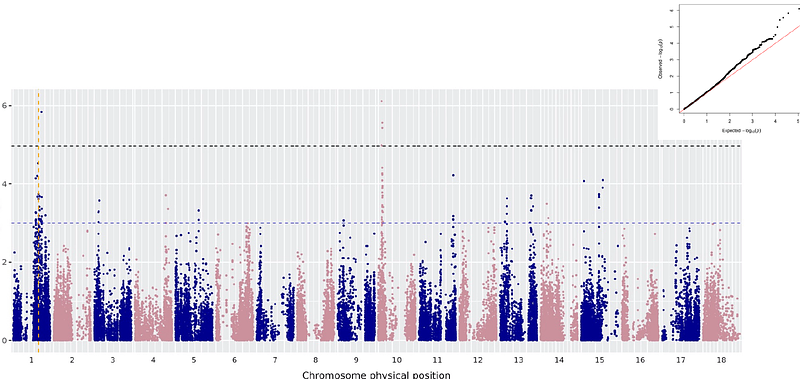Bivariate genome-wide association study reveals polygenic contributions to covariance between total carotenoid and dry matter contents in yellow-fleshed cassava (Manihot esculenta)

Bivariate genome-wide association study reveals polygenic contributions to covariance between total carotenoid and dry matter contents in yellow-fleshed cassava (Manihot esculenta)
Villwock, S. S.; Parkes, E. Y.; Nkouaya Mbanjo, E. G.; Rabbi, I.; Jannink, J.-L.
AbstractCassava breeders aim to increase the provitamin A carotenoid content of storage roots to help combat vitamin A deficiency in sub-Saharan Africa, but a negative genetic correlation between total carotenoid (TC) and dry matter (DM) contents hinders breeding efforts. Genetic linkage between a major-effect variant in the phytoene synthase 2 (PSY2) gene and nearby candidate gene(s) has been thought to drive this correlation. Evidence from molecular experiments, however, suggest there may be a metabolic relationship between TC and DM, which we predicted would create genome-wide mediated pleiotropy. Bivariate genome-wide associations were used to test the hypothesis of pleiotropy and examine the genetic architecture of the negative covariance between TC and DM. A population of 378 accessions in the yellow-fleshed cassava breeding program at the International Institute of Tropical Agriculture (IITA) in Ibadan, Nigeria was genotyped with DArTseqLD. TC measured by iCheckTM spectrometer and DM data were available from field trials over ten years across three locations in Nigeria. Mixed linear models controlling for the previously-identified PSY2 causal variant were used to identify multiple new quantitative trait loci (QTL) jointly associated with both traits. A binomial test with 13 jointly-associated loci identified at a relaxed significance threshold indicated that loci are significantly more likely to affect TC and DM in opposite directions. Even after accounting for the effects of these 13 loci, there was significantly negative polygenic covariance between TC and DM remaining. These findings support the hypothesis that mediated pleiotropy rather than genetic linkage drives the negative genetic correlation between TC and DM in cassava and demonstrate a new application of multivariate GWAS for interrogating the genetic architecture of correlated traits.